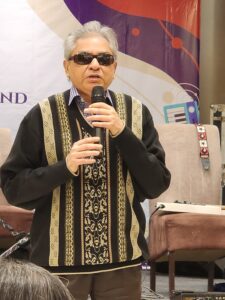“We do not inherit the earth from our ancestors; we borrow it from our children.”
-Native American Proverb.
![]()
In this series on some remarkable, path-breaking green buildings, we bring highlights of a building that set new standards in sustainable architecture very early even as the term “green buildings” was being coined. So, here we go on this exceptional journey!
More London Building
More London, a prominent development located on the south bank of river Thames in London, is a striking example of modern architecture blended with sustainable design. The development includes several buildings, but one of the most notable is the City Hall, designed by the renowned architectural firm Foster + Partners. Completed in 2002, More London covers approximately 13 acres and includes various office buildings, retail spaces, and public areas. Let’s know in detail about the City Hall, the most iconic structure within the development.
Architectural highlights
- Design and shape
The City Hall is distinctive for its unconventional, bulbous shape, often described as an ovoid or an asymmetrical sphere. This unique form is not merely an aesthetic choice but also serves functional purposes. The building shape minimizes its surface area, reducing heat gain from the sun, which is critical for energy efficiency. The tilt and orientation of the building are optimized to reduce the amount of direct sunlight on its south-facing façade, which helps in reducing cooling loads during the summer month.
- Architects
Foster + Partners, led by Sir Norman Foster, are the masterminds behind the design of the City Hall. This architectural firm is well-known for its innovative and environmentally conscious designs. Their approach to the City Hall was to create a building that not only stands out visually but also sets a benchmark for sustainability in urban architecture.
- Floor pattern
City Hall spans an approximate floor area of 185,000 square feet over 10 floors. Despite its relatively modest height, the building makes efficient use of space through its open-plan design, which encourages natural light penetration and reduces the need for artificial lighting.
 Sustainability features
Sustainability features
- Energy efficiency
One of the key sustainability features of the City Hall is its energy efficiency. The building’s double-glazed façade and high-performance insulation materials significantly reduce heat loss, making the structure more energy-efficient. Additionally, the building is equipped with photovoltaic cells on its roof, which contribute to generating renewable energy on-site.
- Natural ventilation
The design of City Hall incorporates natural ventilation systems that reduce the reliance on mechanical heating and cooling. The building’s form allows for the stack effect, where warm air rises and is expelled through vents at the top, while the cooler air is drawn in from the lower levels, maintaining a comfortable internal climate.
- Water conservation
Water conservation is another critical aspect of City Hall’s sustainability strategy. The building utilizes a rainwater harvesting system that collects and stores rainwater for use in irrigation and flushing toilets. This system reduces the demand on the municipal water supply and promotes the efficient use of natural resources.
- Material selection
The materials used in the construction of City Hall were carefully selected for their environmental impact. Recycled and locally sourced materials were prioritized to minimize the carbon footprint associated with transportation and production. The use of durable materials also ensures the building’s longevity, reducing the need for frequent repairs and replacements.
- Green roof
The rooftop of City Hall is partially covered with vegetation, known as a green roof. This feature provides insulation, helping to regulate building’s internal temperature, and promotes biodiversity in an urban environment. The green roof helps absorb rainwater, reducing runoff and alleviating pressure on city’s drainage systems.
Environmental impact and achievements
The sustainable features of City Hall have resulted in significant environmental benefits. The building’s energy consumption is substantially lower than that of conventional office buildings, thanks to its innovative design and use of renewable energy sources. The natural ventilation system, combined with energy-efficient glazing and insulation, has reduced the need for air conditioning, cutting down on energy use and greenhouse gas emissions.
City Hall has achieved several sustainability certifications, reflecting its commitment to environmental responsibility. The building serves as a model for sustainable urban design, demonstrating how architectural innovation can coexist with ecological sensitivity. It showcases the potential for modern buildings to reduce their environmental footprint while providing functional and aesthetically pleasing spaces.
More London’s City Hall exemplifies the fusion of cutting-edge architecture and sustainable design. Through its unique shape, energy-efficient systems, and environmentally friendly materials, the building minimizes its impact on environment and sets a precedent for future developments in urban sustainability. We shall soon be back with another modern wonder that redefines the concept of sustainable design, don’t miss the fun!
Sources
https://www.fosterandpartners.com › projects › pwc-mo…
https://www.workero.com › Blog › Smart Office
https://scenarioarchitecture.com › sustainability › sustai…
https://www.jaga.co.uk › PWC-Case-Study
ABOUT THE AUTHOR

Sandeep Singh is an architect from IIT Roorkee.
Ten years after graduating, he lost his vision to genetic Diabetes.
He reinvented his career and turned writer.
He has authored two fiction books and writes blogs on
Architecture, Outsourcing, Safety and a variety of other
subjects for different organizations. He also chairs and runs two NGOs
